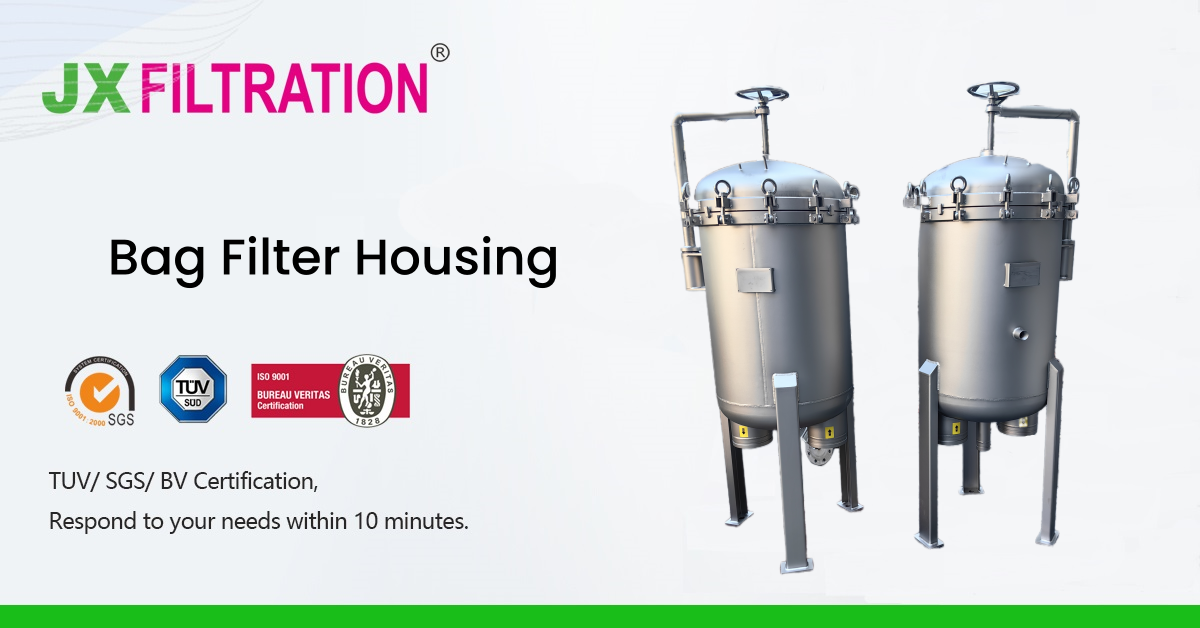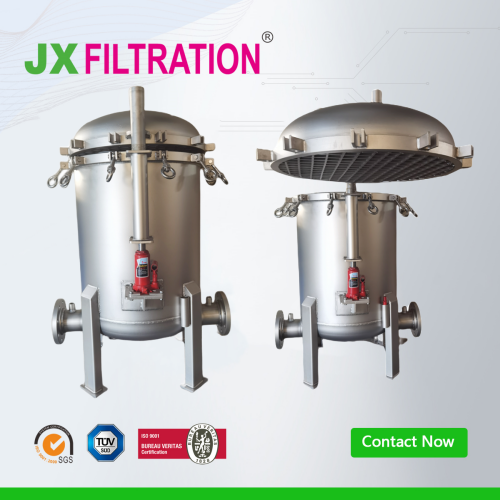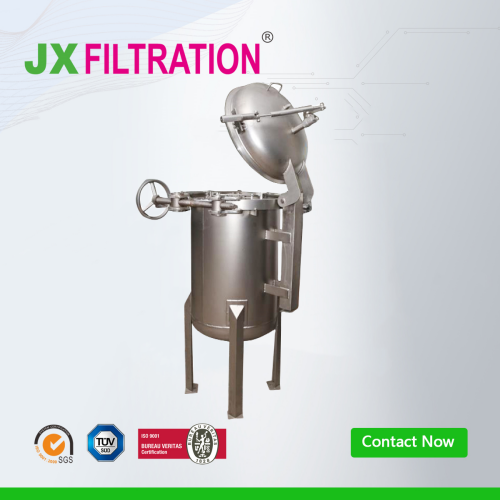How to Properly Use a Bag Filter
A bag filter is a highly practical and versatile filtration device. Internally supported by a metal mesh basket, the liquid flows in from the inlet, passes through the filter bag, and exits from the outlet, with impurities being trapped in the filter bag. After replacing the filter bag, the device can continue to be used.

-
Once the filter is installed in place, connect the flanges on the equipment with the corresponding flanges of the system. Weld the support legs and base buried iron together, securing the legs and base with bolts and nuts.
-
During liquid inflow, loosen the top exhaust valve, and slowly open the inlet valve. Gas in the cylinder should be discharged through the exhaust valve. When water fills the steel cylinder, close the exhaust valve and then open the outlet valve.
-
The water quality at the inlet should have a turbidity of less than 1 NTU. If water quality exceeds the standard, close the inlet valve and check the operation of the preceding equipment. Restart operation only when water quality meets the requirements.
-
If the water quality at the outlet is unsatisfactory, stop immediately or regularly check the inlet and outlet water pressure. Under normal operation, the pressure difference (inlet and outlet pressure difference) should be less than 0.1 MPa. If the pressure difference exceeds 0.1 MPa, remove the filter element for acid cleaning and continue use. If too much filter residue accumulates on the filter element and cannot be cleaned, stop operation and replace the filter element.
-
Steps to replace the filter element in a bag filter: Close the inlet and outlet valves, open the exhaust valve and discharge outlet to drain the liquid from the cylinder. Open the top cover, remove the filter element, and clean the upper and lower chambers of the cylinder. Insert the new filter element into the porous valve seat, ensuring all sockets are inserted into the valve seat. After all filter elements are inserted, cover with the porous pressure plate, screw on the rod with the nut, and fix all filter elements with the porous pressure plate. However, the nuts do not need to be tightened too much as long as the filter elements are not loose.
-
When tightening the bolts to press the flanges, avoid applying excessive force to prevent leakage.
Any Requirements, Contact Us Now!
Kris
Email/Teams: kris@filtrationchina.com
Mobile/Whatsapp/Wechat: +86 18980776200


